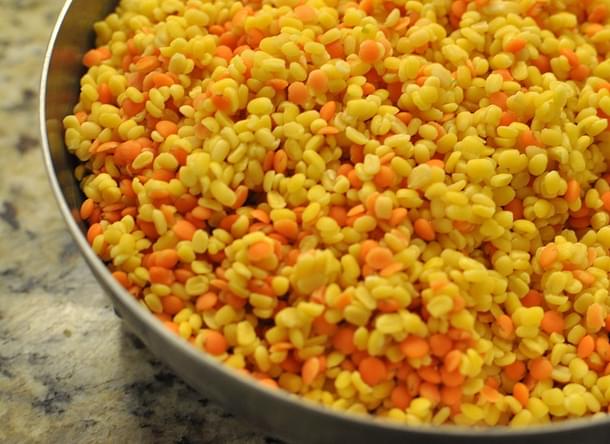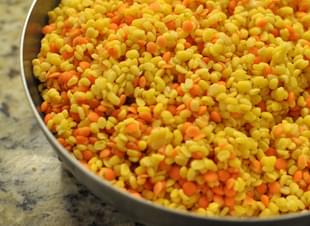Economy
How The Government Can Keep Dal From Boiling Over
Seetha
Oct 17, 2015, 11:45 AM | Updated Feb 11, 2016, 08:53 AM IST
Save & read from anywhere!
Bookmark stories for easy access on any device or the Swarajya app.


Politicians and psephologists may debate over whether the Bihar election outcome will be determined on the basis of caste or development but it might be the humble dal which may just end up as the deciding factor.
Except that dal isn’t so humble any more, what with the price of most dals ranging well above Rs 100 a kg, with arhar/tur touching Rs 200 in some parts of the country.
Actually, the Narendra Modi government is finding itself in a bit of a, well, lentil soup. It is coming under opposition fire for the soaring prices but the steps it is taking are not helping. Yet it cannot stop taking those steps since it has to battle the perception issue – any price rise is always, but always, blamed on the central government.
The skyrocketing prices are to do with a production shortfall. Against 19.78 million tonnes (mt) in 2013-14 (the crop year is July-June), the yield in 2014-15 was 17.38 million tonnes. A slight recovery is expected in 2015-16 but, at 18.32 mt, it will still be less than the 2013-14 production. Tur production dropped from 3.1 mt to 2.7 mt.
Apart from the usual crackdown on hoarders, imposition of stock limits and the like, the government decided to import pulses on its account (pulses import is overwhelmingly a private activity). It has purchased 5000 metric tonnes, of which around 4000 metric tonnes has landed. Another 2000 tonnes will now be procured. It has offered this at a slight subsidy to state governments.
But that isn’t likely to help very much. For one, the imported quantities will not make up for the shortfall. These emergency imports by the government are over and above the normal imports that have been plugging the shortfall between demand and supply for many years now. Production in Myanmar and Australia, two of the top four sources of imports, are also reported to have suffered this year. So there isn’t a huge amount out there in the world market to buy.
More importantly, even the supplies that have landed are languishing at the Chennai and Mumbai ports. State governments are just not lifting the stocks. When it was clear that there was a crisis at hand, the government decided to build up a buffer through imports, though state governments were largely cool to the idea. Only Tamil Nadu and Andhra Pradesh said they were keen to plug the demand-supply gap with imports and they have been allocated the quantities they asked for. In the case of Delhi, the central government is arranging for pulses to be sold through Kendriya Bhandars and Safal outlets. That is why imports haven’t helped cool prices.
State governments have their own problems, however. The imported pulses come in a whole form and have to be milled and processed, something they don’t have the capacity for, since private trade has always done this. Rigid government processes will not allow them to quickly get the pulses processed at private facilities. Some state governments which initially expressed interest in the imported dal backed out when they realised they would have get the processing done themselves. It would be unfair to blame them.
There is also the problem of how to distribute these dals. Organising for cheap onions to be available at select outlets is one thing, doing the same for dals is something else. Pushing them through ration shops is one way out but state governments are wary of setting a precedent and sparking off a demand for including pulses in items sold through the public distribution system (some states do this).
Nevertheless, the central government will have to continue fire-fighting for as long as it takes. But once that is over, serious attention has to be paid to long-term solutions.
India is not just the world’s largest consumer of pulses, it is also the largest producer. But domestic production has always been short of consumption, so it is also the world’s largest importer. But imports account for less than 20 per cent of availability.
Consumption has been rising over the years, even as production has been stagnant. According to the National Sample Survey’s Household Consumption of Various Goods and Services in India 2011-12 report, per capita consumption has increased 9 per cent in urban areas and 11 per cent in rural areas between 2004-05 and 2011-12. However, acreage and yield per hectare have fluctuated within a narrow range. In fact, the yield is lower than in other countries.
A report by the National Council of Applied Economic Research, India’s Pulses Scenario, lists the reasons why pulses production isn’t enough to meet domestic demand. One, only 15 per cent of area under pulses has assured irrigation (indeed, the production shortfall is due to weak monsoons). Two, farmers aren’t keen on growing pulses because of fluctuations in production and prices.
It’s not as if governments have been blind to this. The NCAER report also points out that the United Progressive Alliance (UPA) government included pulses in the National Food Security Mission and had given handsome minimum support price (MSP) hikes to encourage production. The present government has hiked 2015-16 MSP for tur, moong and urad dal by around 6 per cent. The agriculture ministry’s Commodity Profile for Pulses – September 2015 report shows that the MSP hikes for pulses between 2011-12 to 2015-16 has been in the range of 38 per cent to 44 per cent.
This has helped but it is not enough. The NCAER report flags the poor spread of improved varieties of pulses and technologies, vulnerabilities to pests and diseases and general decline in total factor productivity as issues that need to be addressed. These things will take time to yield results, just as the best flavour of dals come when they are slow cooked. That’s why the government needs to get cracking on this.
Seetha is a senior journalist and author





